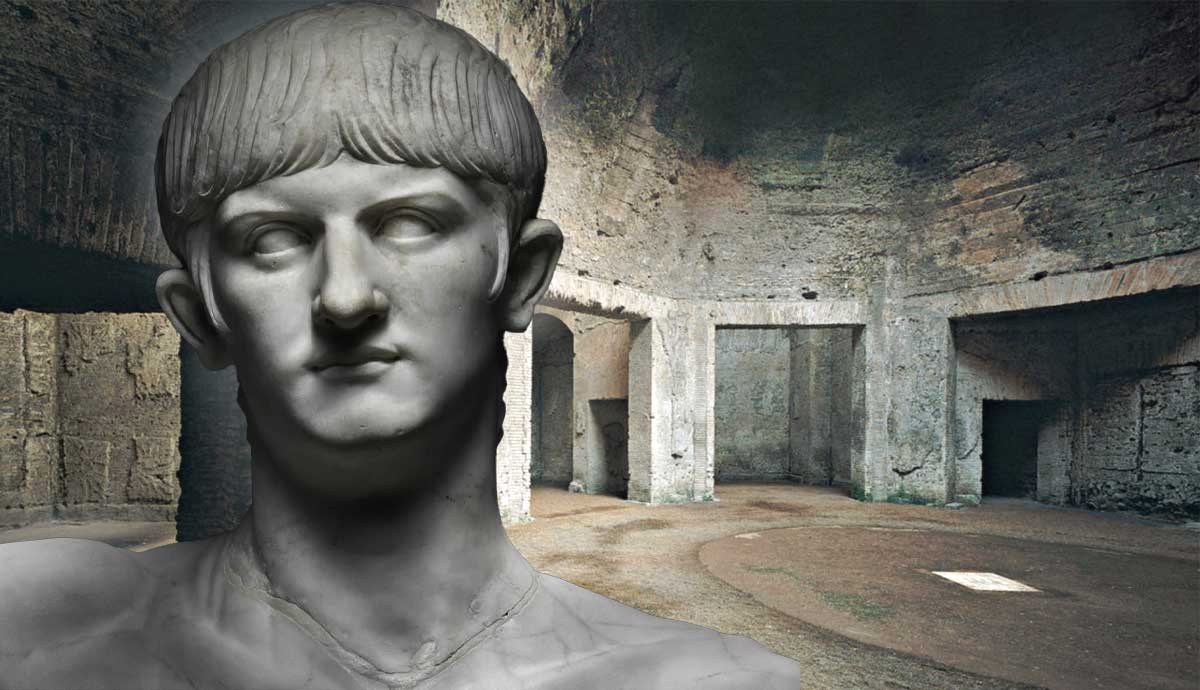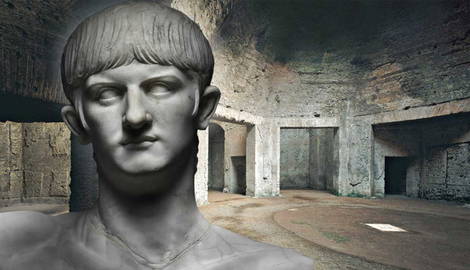
The Domus Aurea, or the “Golden House”, was a vast and opulent palace complex built by Emperor Nero in the heart of ancient Rome. The Palace, sprawling over three hills, was one of the most extravagant architectural marvels of the ancient world, covering an area of about 100 hectares (250 acres). The luxurious complex featured marvelous gardens, a man-made lake, fountains, statues, frescoes, and even a rotating dining room! The fabled palace was a symbol of Nero’s power and influence, but also of the emperor’s decadence and downfall.
After he died in 68 CE, Nero’s successors tried to erase his memory, razing the palace and burying it under new buildings, including the Colosseum. The Domus Aurea would remain hidden for centuries until its rediscovery in the Renaissance, inspiring the host of artists who admired its paintings and decorations. Today, the palace, located under Rome’s busy streets, is a fascinating archaeological site that offers a glimpse into the life and culture of the ancient city and the splendor of the lost Empire.
Domus Aurea Was Emperor’s Nero Masterpiece

In the aftermath of the Great Fire of Rome of 64 CE, Emperor Nero seized the opportunity to build his grand palace – the Domus Aurea. Known as the “Golden House”, the vast palatial complex sprawled over most devastated areas, including the Palatine, Esquiline and Caelian Hills. It was an opulent structure, a fulfilment of Nero’s ambitions and dreams. The Domus Area was more than a simple palace. A vast area (over 100 hectares) included sprawling gardens, artificial lakes, vineyards, fountains, an army of statues, a host of buildings, and hundreds of rooms elaborately decorated by lavish frescoes.
The highlight was a rotating dining room – an architectural marvel of the ancient world. To give it a personal touch, emperor Nero commissioned a colossal bronze statue of himself – the Colossus Neronis. Thus, the Domus Aurea was not merely a residence of the emperor. It was a symbol of Nero’s absolute power and, for his enemies, the clear and present evidence of the emperor’s decadence.
It Was a Marvel of Architecture and Art

Starting in 64 CE, the best architects, engineers, and artists worked tirelessly for four years to realize Nero’s dream. The result was the marvel of Roman architecture and art – the Golden Palace. The buildings and gardens of the vast complex were filled with sculptures the emperor, who considered himself an artist, had taken from Greece and Asia Minor. Elaborate wall paintings adorned the walls, inset with semi-precious stones, gems, seashells, and, of course, gold. The Octagonal Hall, a highlight of the palatial complex, featured a rotating ceiling, creating an illusion of the heavens in motion.
The Palace architects, Celer and Severus, went even further, inserting panels to a ceiling, which would open to shower dinner guests with perfume, rose petals, and gifts. Nero’s grand palace was a marvel to behold, outshining the more famous Hadrian’s Villa at Tivoli. To those who visited the Domus Area, one thing would be immediately apparent. Emperor Nero was truly a master of the world.
Yet, it Led to Nero’s Downfall

While the Domus Aurea was the imperial residence, it seems that Nero planned for at least some parts of the complex to be open to the citizens of Rome, with the emperor playing the role of the protector and the patron of the arts. Yet, the timing of its construction was unfortunate, as the works started immediately after the Great Fire of Rome.
The emperor’s powerful enemies, many of them senators, seized the opportunity and blamed Nero for the fire, using the opulent “Golden House” as the symbol of the emperor’s decadence and waste of money – a clear and present evidence of emperor’s megalomania illustrated by Nero’s colossal statue, placed at the entrance of the grand palace. Faced with increased hostility, Nero committed suicide in 68 CE, six months after the complex’s completion.
The Palace Shared Nero’s Fate

The Domus Aurea shared the fate of its maker. After a bloody civil war, the new Flavian dynasty decided to get rid of all symbols of the hated emperor. Seeking to distance himself from Nero’s extravagance, Emperor Vespasian ordered the filling of the artificial lake and built the amphitheater over the site. Interestingly, Vespasian did not destroy the colossal statue of Nero, refashioning it instead into the statue of the sun god Helios. Which eventually gave the name to the Flavian amphitheater – Colosseum. In the following decades, most buildings were buried underground, with new structures constructed above them. Historians like Suetonius and Cassius Dio, employed to legitimize the new imperial dynasty, tarnished Nero’s name and reputation, turning the Domus Aurea, from the symbol of the Roman Empire’s splendor to the warning of the dangers of unchecked power.
Domus Aurea Became Emperor’s Nero Lasting Legacy

The imperial propaganda did its best to erase the memory of the vast palatial complex that was briefly a marvel of the ancient world. Yet, the Domus Aurea could not be completely destroyed. In one of those historical twists, the buried remains of Nero’s grand palace saw the light of day once again following their accidental rediscovery in the late 15th century.
The exquisite frescoes, intricate decorations, and the monumental vaulted spaces captivated the host of artists and architects, helping to spark the Renaissance. Raphael’s visit to the long-buried halls – grottoes – inspired the master painter and his colleagues to start an entirely new artistic style – grotesque – emulating the mythological and fantastical scenes depicted on the frescoes of the Domus Aurea. Furthermore, the rediscovery of Nero’s Golden Palace also ignited a renewed interest in classical antiquity and ancient Rome, which remains strong to the present day.










